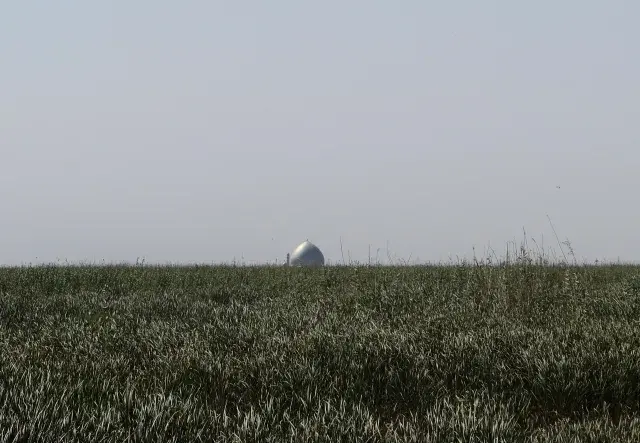یاخیبوونەکانی باکوور و باشووری عێراق (١٩٩١ - ٢٠٠٣)

ڕاپەڕینی ئازاری ١٩٩١ لەلایەن دانیشتوانی شیعەی باڵادەست لە باشوور، تاڕادەیەکی زۆر خۆرسکانە بوو لە دژی ڕژێم، بە شێوەیەکی سەرەکی لە شارەکانی بەسرە، عەمارە، ناسریە، نەجەف و کەربەلا، حلە، سەماوە، کوت و دیوانییە. ڕاپەڕینەکان، لە نێوان ئەوانی تردا، لەلایەن ڕێکخراوە ئیسلامییە نهێنییەکانی وەک ئەلدەعوە پاڵپشتی دەکران. هەروەها یاخیبووان لە لایەن لیوای بەدرەوە، کە لەلایەن ئێرانەوە ڕاهێنراون، بە فەرماندەیی بەکر حەکیم، سەرۆکی ئەنجومەنی باڵای شۆڕشی ئیسلامی لە عێراق (SCIRI) و لە دەربەدەری لە ئێران، پاڵپشتییان دەکران، هەروەها لە لایەن سەبازە هەڵهاتووەکانی سوپای عێراقەوە کە ڕایانکردووە لە ئۆپەراسیۆنە سەربازییەکانی باشوور. ڕاپەڕینەکان بە وتارێکی سەرۆکی ئەمریکا جۆرج بوش هاندران، کە لە شوباتی ١٩٩١دا "گەلی عێراق بابەتەکان بخەنە دەستی خۆیان و سەددام حوسێنی دیکتاتۆر ناچار دەکەن دەست لەکار بکێشتەوە. ". خەڵکەکە بڕوایان وابوو کە ئەمریکا پشتگیری دەنێرێت لە ئەگەری ڕاپەڕین، بەڵام ئەمە ڕووی نەدا. لە ماوەی دوو هەفتەدا، فیرقەی پاسەوانی کۆماریی کە سەددام بۆ مەبەستێکی لەو شێوەیە لە یەدەگدا هێشتبوویەوە، هەموو شارەکانیان بە زیانی گەورەی گیانی و ماددی و وێرانکارییەوە، کۆنترۆڵکردەوە. هەزاران کەس بەرەو ئێران، یان ئەهوار (ناسراو بە تاڵاوەکانی میزۆپۆتامیا) یان سعودیە هەڵاتن.
سعودیە یەکێک بوو لە هاوبەشەکانی هاوپەیمانان لە جەنگی دووەمی کەنداودا. نزیکەی ٣٥,٠٠٠ پەنابەری عێراقی لە کەمپی ڕەفحە لە باکووری سعودیە نیشتەجێ کران. سعودیە هیچ چوارچێوەیەکی یاسایی بۆ دیاریکردنی دۆخی پەنابەران نەبوو. زۆرێک دەیانتوانی تا ساڵی ١٩٩٧ نیشتەجێ ببنەوە بۆ وڵاتانی سێیەم، بەڵام کاتێک وڵاتانی بیانی وازیان لە وەرگرتنی پەنابەران لە ڕەفحە هێنا، ٥٠٠٠ کەسیان تا ساڵی ٢٠٠٣ لە کەمپی بیابانەکاندا مانەوە و تووشی تەنیایی و دوورخستنەوە بوون. هەزار یاخیبووی دیکە پەنایان بۆ ئەهوار برد. سەددام هەڵمەتەکەی لە دژی ئەو خەڵکانەی کە خۆیان شاردبووەوە دەستپێکرد، لەنێویاندا تاڵاوەکانی باشوور (ئەهوار)، چونکە ئەوان وەک هاوپیلانگێڕ 'گریمانە' کرابوون. بەپێچەوانەی هەڵمەتی ئەنفال کە بەباشی ئامادەکاری بۆ کرابوو دژی کورد لەساڵی ١٩٨٨دا، وەڵامدانەوەکەی سەددام هەڕەمەکییانە بوو بە تەقەکردن لەناو کەشتییە چەکدارەکانی هێلیکۆپتەر، تۆپخانەی قورس و لەسێدارەدانی ڕاستەوخۆ، گرتن و کوشتنی یاخیبووان و خەڵکی ڕەسەن. زانیارییەکی کەم لەبارەی ڕووداوە ڕاستەقینەکانی ئەهوارەوە هەیە، بەهۆی ڕەتکردنەوەی سەددام بۆ دەستڕاگەیشتنی ڕێکخراوە نێودەوڵەتییە سەربەخۆکان بەم ڕووداوانە و دواجاریش بەهۆی فەرامۆشکردنی نائاگای کۆمەڵگای نێودەوڵەتی دەربارەی ئەم ناوچەیە. جگە لەوەش سەددام بەردەوام بوو لەسەر ئەو کارەی کە پێشتر لە کاتی شەڕی ئێران و عێراقدا دەستی پێکردبوو، ئەویش وشککردنی بە ئەنقەست و ڕێکخراوی ناوچەی ئەهوارلە باشووری عێراق کە لە ئەنجامدا کۆچی بەکۆمەڵی ئەهوار و نەمانی تاڵاوێکی جیهانی ناوازەی لێکەوتەوە. لە ساڵی ٢٠٠٠ کەمتر لە ١٠٪ی ڕووبەری ڕەسەنی ئەهوار مابووەوە.
ڕاپەڕینی شیعە لە باشوور کوردەکانی هاندا، دوای چەند رۆژێک لە باکووریشدا ڕاپەڕین سەریهەڵدا. پارتی دیموکراتی کوردستان (KDP) و یەکێتی نیشتمانی کوردستان (PUK) و بەشێک لە جەحش (جاش)، (کەتیبەی بەرگری نیشتیمانی کوردی لایەنگری حکومەت)، شارۆچکەکانیان یەک لە دوای یەک داگیرکرد تا لە ١٩ی ئازاری ١٩٩١ کەرکوکیان گرت. سەددام ئاراستەی هێزەکانی گۆڕی بۆ کوردستان و لە ماوەی دە ڕۆژدا حکومەتی عێراق کەرکوکی گرت و چووە ئەو ناوچانەی لە ژێر دەستی پێشمەرگە بوون. یادەوەرییەکانی ئەنفال و کارەساتە کیمیاییەکەی بووە هۆی کۆچێکی بەکۆمەڵ لە دانیشتوانی کورددا. لە ماوەی چەند ڕۆژێکدا دوو ملیۆن کەس لە هاتووچۆدا بوون و بەرەو تورکیا و ئێران هەڵهاتن. بەهۆی ئەم کۆچەوە نەتەوە یەکگرتووەکان لە نیسانی ١٩٩١ بڕیارنامەی ٦٨٨ی پەسەند کرد، ڕێگای بە ئەمریکا و بەریتانیا و فەرەنسا دا ناوچەی دژە فڕین دابمەزرێنن. بۆ دروستکردنی 'پەناگەیەکی ئارام'ی کوردی لە باکووری هێڵی ٣٦ ی پانی. , ئەمەش سوپای عێراقی ناچارکرد لە ئۆکتۆبەری ١٩٩١بکشێنەوە لە ناوچەکە. ئەمەش هاوکات بوو - تا ڕادەیەک - لەگەڵ ئەو ڕووداوانەی کە ناوچەی کوردی لە ساڵی ١٩٧٤دا شاهیدی بوو. دەستێوەردان و پاراستنی هاوپەیمانان بووە هۆی دروستکردنی قەوارەیەکی سەربەخۆی کوردی لە باکووری عێراق. لە ئایاری ١٩٩٢ لە سەرتاسەری هەرێمی کوردستاندا هەڵبژاردنی ئازاد بەڕێوەچوو - بۆ یەکەمجار لە عێراقدا - لە حوزەیرانی ١٩٩٢ ئەنجومەنی نیشتمانیی کوردستان پێکهێنرا. ئەم ئەنجوومەنە ڕووبەڕووی ململانێیەکی قووڵی ناوخۆیی بووەوە، لەنێوان فراکسیۆنە ڕکابەرەکانی پارتی دیموکراتی کوردستان و یەکێتی نیشتیمانی کوردستان، ئەمەش بووە هۆی دروستبوونی ململانێی چەکداری لەنێوان ئەو دوو حزبەدا لە ساڵ. ساڵی ١٩٩٨ جەلال تاڵەبانی (یەکێتی) و مەسعود بارزانی (پارتی) دواجار ڕێککەوتنی ئاشتییان لە واشنتۆن واژۆ کرد، بەڵام حکومەتی هەرێمی کوردستان لە نێوان هەردوو ئیدارەی ڕکابەردا بە دابەشبوویی مایەوە.
هذا المحتوى مرخص بموجب رخصة المشاع الإبداعي CC BY-NC 4.0.






